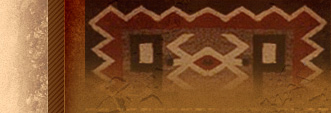 |
 |
| |
Experiential Ways of Knowing |
|
| |
"The personal issue of telling stories about illness is to give voice to the body, so that the changed body can become once again familiar in these stories. But as the language of the story seeks to make the body familiar, the body eludes language." Read more...
-- Arthur Frank
"I suggest, and I believe that I am right, that sensory stimuli are closer to our unconscious, subconscious, or autonomous functioning than to any of our conscious understanding." Read more ...
-- Moshe Feldenkrais
"First, we need to differentiate between sensing and perceiving. Sensing is the more mechanical aspect, involving the stimulation of the sensory receptors and the sensory nerves. Perceiving is about one's personal relationship to the incoming information." Read more ...
-- Bonnie Bainbridge Cohen |
| Our brains process incoming sensory information from our eyes, ears, skin, nose, and mouth so quickly that sometimes we forget how much of what we know is perceived immediately, at initial contact. We know that a touch is |
|
friendly or not simply by its feel because there are ways of knowing about the world that reside in the body itself.
The fact that we are embodied organisms affects us so profoundly that we ask to hold something we are shown, saying "Let me see it," but meaning "Let me hold it." So strong is the human urge to know things through touch, in fact, that museums of natural history routinely put plastic copies of bones at the ends of mounted skeletons within the public's reach. They are touched so often by visitors that they require frequent replacement due to wear.
We all know why museum visitors feel they have to trail their fingers across the bones to truly know them. We have done things like that ourselves, even if not that precise thing, and we know what we were feeling at the time that motivated us to do it. The human experience may be hard to objectify, but its reality is nonetheless meaningful.
To explore an example of experiential knowing first-hand, visit Experiential Learning about Tornadoes. Note: The Tornado link takes you to an older Tapestry webpage that has not yet been reformatted because of its high image content. Use the return button on your browser to return to this page when you have finished exploring the example.
|
|
 |
|
|
|
 |
|
|

